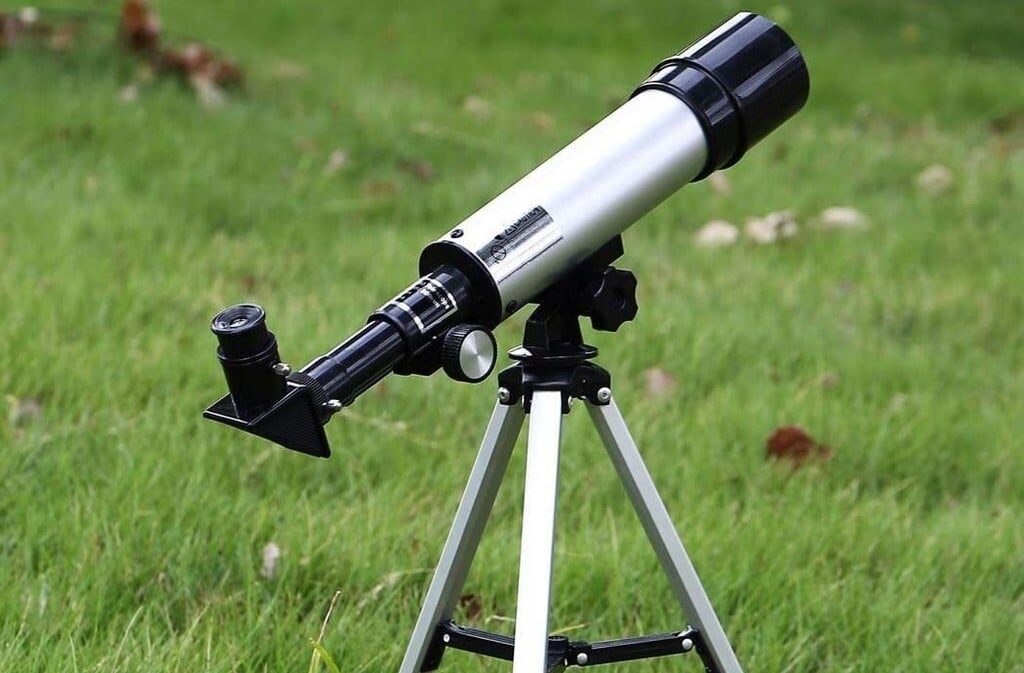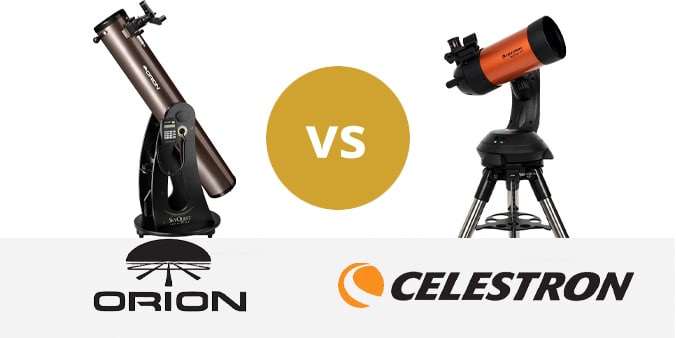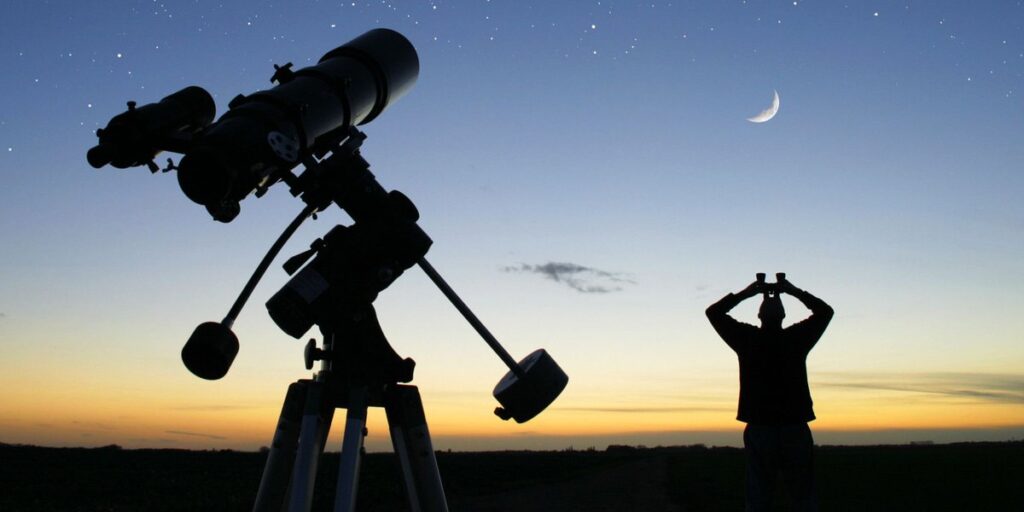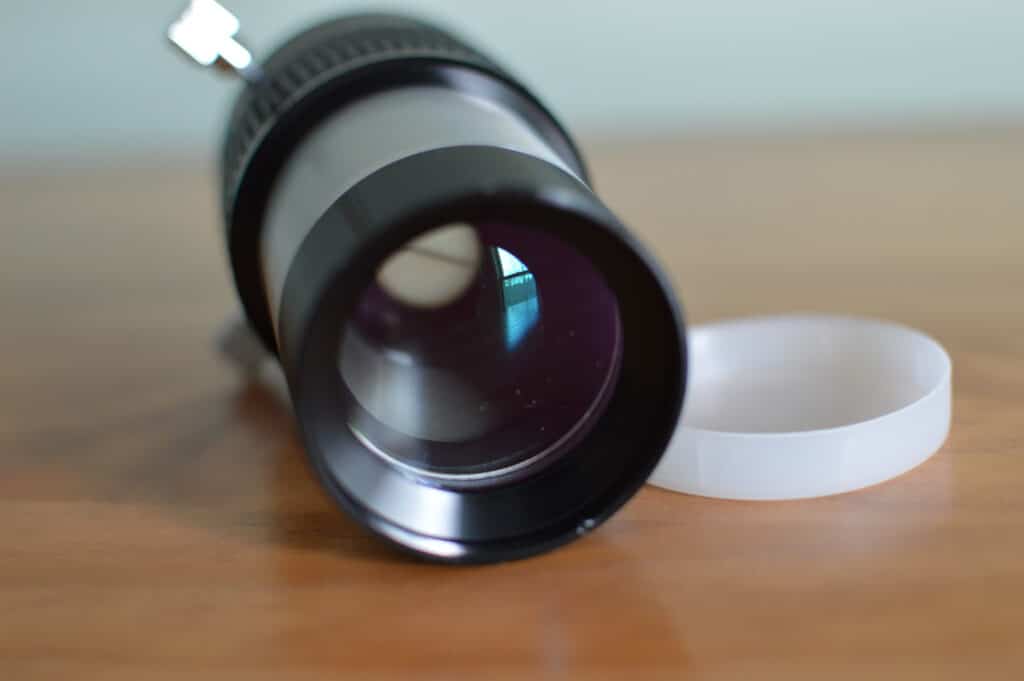

Frankly, there’s no telescope vs microscope competition because both instruments have very different applications. Notwithstanding, they share a few similarities, including the magnification of the view of objects that are invisible to the unaided eye.
Trust us, there’s a lot to learn about telescopes and microscopes and we are here to provide you all the information you need to know their types, how they work, and how much they cost. Ride along with us as we explore the world of these two indispensable optical instruments.
Microscopes came into existence in the mid-1600s due to the need to view incredibly tiny objects. They’re a product of the humble magnifying glass—an ancient curved lens of Greek origin. Besides, this optical instrument is perhaps the most common type among humans.
While eyeglasses won’t be among your main suspects to be a microscope, they are indeed their simple variants. They use lenses to enlarge the image of an object so that your eye can see it for what it is.
If you didn’t know before now, microscopes have different types that are often categorized based on how they generate images through light, electrons, scanning probes, or photons. There are three main types of microscopes, including optical, electron, and compound microscopes.
Furthermore, optical microscopes use one or more lenses to deliver a magnified image or an object placed within the instrument’s field of vision. Besides using refractive glass to focus light onto the eye, they have a maximum magnification power of up to 1500x.
Also, electron microscopes produce a composite image via a magnetic lens. They’re divided into two categories; scanning electron microscope (SEM) and transmission electron microscope (TEM).
Lastly, compound microscopes have multiple lenses. Here, the objective lens is compounded by the eyepiece lens to achieve high magnification. With the best compound microscope at your fingertips, your view of tiny objects is unlimited.
By now, you know that the microscope is all about observing objects that are too small/tiny to be seen with the naked human eye. Hence, they’re often used in scientific research in various disciplines, especially biology. This isn’t surprising because biological scientists are known to study the anatomical details of organic objects to better learn about their structure.
Of course, the different types of microscopes work a bit differently, mostly due to their different designs. While some offer 3D observation, others only allow you to observe via an electronic device such as a laptop. Plus, the compound microscope can be observed traditionally—looking through the instrument’s eyepiece.
Without having the right budget, you can’t own a microscope. Thankfully, you can still find a beginner-friendly option that costs between $100 and $300. For a beginner, you can have the basic features you’ll need at that price. This price range has the best microscopes for students but you must ensure that you consider the right factors.
A good example of an affordable, yet effective microscope is the Celestrons Labs CB2000CF Microscope. Costing less than $300, it is the dream of any scientist thanks to its lab-ready design with 1000x power and 10x & 20x eyepieces. That’s not all: there are also four fully achromat objective lenses.
As you become more experienced, you can opt for top-quality, high-end microscopes costing $1000 or more.
Telescopes have an interesting story as they were originally designed in the Netherlands in 1608. However, the telescope didn’t become widely known until 1609 thanks to the Galileo building. The famous scientist was said to have used a telescope to watch celestial objects high up in the sky.
Besides, telescopes utilize lenses, mirrors, or a combination of both tools to observe distant objects.
Like microscopes, telescopes boast various types. The most popular and commonly used types include Refractor, Reflector, and Catadioptric. Although the telescope types we’ve mentioned are known to amateur astronomers, others are not as popular. Some of them include radio, x-ray, gamma-ray, and infrared telescopes.
Let’s get you acquainted with the main types of telescopes: while reflecting telescopes use curved mirrors to produce images, reflecting telescopes use glass lenses to produce their images. Also, catadioptric telescopes use the combination of lenses and mirrors in one viewing device to form images while gamma-ray and x-ray telescopes detect light outside of the visible spectrum.
While the types of telescopes are different, each design features a unique optical path. Even though some use mirrors, some use glass lenses, and others utilize a combination of both, the concept is unchanged across the board. Each telescope type uses a primary lens or mirror to “gather” and “collect” light to show astronomical objects.
Besides the main lens or mirror, telescopes feature additional optical parts as well as accessories that help you to see a produced image with magnification. With even a basic telescope, you have the power to locate and observe stars, moons, and planets.
The telescope’s price range is quite similar to that of the microscope. With about $100, you can get a basic telescope that still offers the main functions of the instrument. However, if you want an advanced variant, you should be ready to spend up to $1000 or more.
Even below $1000, you can still find a professional-grade telescope such as the Celestron NexStar 11068 Special Edition Telescope. Not only does it feature a computerized hand control with a nearly 40,000-object database, but it also comes with a motorized altazimuth mount. There are also very effective telescopes under $500 but you must look in the right places.
However, you should be familiar with most of the major constellations before investing in a telescope as advised by the University of Toledo. Trusted Source Telescope FAQ Telescope FAQ : Ritter Planetarium and Brooks Observatory : The University of Toledo www.utoledo.edu
As we mentioned at the beginning of this article, there’s no competition between microscope and telescope; we can only explore their differences. Below, we will discuss the difference between microscope and telescope based on specific factors:
By now, you know that microscopes and telescopes are used in various fields. While the microscope is mostly used in the laboratory, the telescope is mostly used out in the open.
Although hobbyists and students are allowed to use a microscope for personal use, other professionals such as biologists, botanists, surgeons, forensic doctors, engineers, jewelers, and science teachers, use the instrument too. According to the BBC Trusted Source Light microscopes - Cell structure - Edexcel - GCSE Biology (Single Science) Revision - Edexcel - BBC Bitesize Revise cell structures with BBC Bitesize for GCSE Biology. www.bbc.co.uk , microscopes are needed to study most cells.
The telescope, on the other hand, is also used by hobbyists for recreational purposes but astronomers use the instrument for professional purposes. The professional-grade telescopes are large models. Some are even placed in observatories for use by members of the public while larger telescopes are sent into space for observation purposes.
The typical microscope features three or four objective lenses that have the majority of magnification power. These lenses usually boast 4x, 10x, 40x, and 100x powers. They combine (multiply) with the eyepiece lens on the other end to produce the enlarged image of an object.
On the other hand, most telescopes produce images using either lenses or mirrors. However, refracting telescopes utilize a series of lenses to produce clear images. Like microscopes, refracting telescopes use objective lenses. While telescopes have much larger objective lenses than microscopes, their power is lower, leaving the eyepiece lens with more magnification power.
Simply put, objective lenses in a microscope hold the majority of magnification power but eyepiece lenses do the same in a telescope.
As you might have expected, the eyepieces of a microscope and a telescope differ. Standard eyepieces for microscopes boast a 10% magnifying power. However, some specialized eyepieces range from 5x to 30x. Sometimes, microscope eyepieces may include soft plastic or foam eyecups to ensure a reduction in light pollution and more comfortable viewing.
Also, the eyepieces in telescopes vary based on different models. Expectedly, these different eyepieces offer different distances of eye relief—the distance between the eye and the eyepiece through which the image can be seen. Additionally, eyepieces allow you to change the field of view and the total magnification for your telescope.
If you didn’t already know at this stage, magnification is simply the enlargement of the object in an image. And microscopes and telescopes have different magnification powers. Besides that, the methods of calculating magnification differ for both optical instruments.
A microscope’s magnification rating can be determined by multiplying the power of the eyepiece by the power of the objective lens. This rating tells how many times bigger the formed image is than the original object. However, the telescope’s magnification rating tells how far the instrument can see and how clear the images it forms will be.
In a microscope, the focal length is measured as the distance between the top of the specimen and the instrument’s objective lens. As the focal length decreases, magnification increases.
On the other hand, the focal length (in mm) is used to measure the length of the eyepiece and the total length of the telescope. Besides, the telescope’s focal length is usually located on the diopter tube between the eyepiece and the optical tube. Essentially, the focal length determines the field of view of both microscopes and telescopes.
Field of view (FOV) for a microscope is the maximum observable area when looking through the eyepiece. Simply put, it is the area you see through the microscope for a specific magnification. Also, the microscope’s FOV is usually reduced with increased magnification as we mentioned earlier.
On the other hand, most telescope eyepieces are marked with a number referred to as the apparent field of view (AFOV)—measured in degrees. It tells how much of the night sky that the telescope can potentially see. The true field of view is identified by dividing the AFOV by the instrument’s total magnification.
Both the microscope and the telescope require specific accessories to function optimally. For example, lens cleaners and lens oils can help you keep your objective eyepiece lens in great shape. Besides that, various light bulbs help to produce a customized final image.
Telescopes also require a well-designed and stable mount for smooth operation. A sturdy stand ensures accurate aiming, ultimately leading to a clearer final image.
Frankly, a microscope can’t be used instead of a telescope and vice-versa because they offer significantly different functions. While microscopes magnify tiny objects (usually nearby), telescopes view distant objects (not necessarily tiny).
You can agree with us that there are various objects, organisms, and bacteria that are not visible to the naked human eye. However, the use of a microscope can bring all of these things into clear view. This is also the case with distant objects, especially the ones high up in the sky that can only be seen with the aid of a telescope.
By now, you know that a telescope vs microscope battle is ill-fitting. But it’s quite important to know the differences between the two instruments as this article has shown. You should only invest in one of them if it offers what you want. Of course, nothing stops you from acquiring both if you want the good of both worlds.





